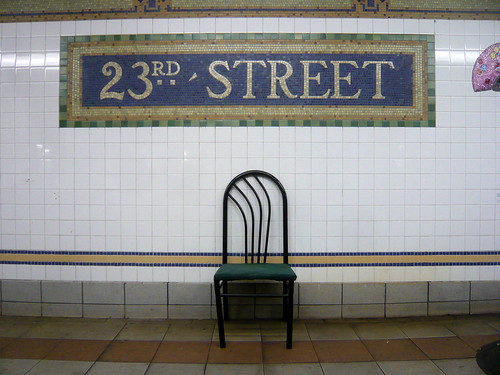What’s the difference between rhetoric and cognitive dissonance?
Both can result in points of view that are so biased that they have no connection to reality. But one involves communicative sleight of hand to mislead the reader/listener, while the other involves a deeper form of dishonesty: Dishonesty with the self.
Murketing.com has no interest whatsoever in influencing your vote. But I think this assessment of last night’s presidential debate offers examples of both rhetoric and congnitive dissonance.
It comes from the Web site of the Weekly Standard, a site I read regularly. It begins with an excellent example of rhetoric: Please continue…
Here’s an interesting article from last month’s Fast Company about the endorsement of Clorox Green by the Sierra Club. Writer Anya Kamenetz asks: “With no independent scientific assessment of Green Works products, and with an undisclosed amount of money changing hands, what does that Sierra Club seal on the back of the bottle really mean?”
The answer seems to be that it’s meant a lot of internal dissent at the Sierra Club — and strong sales for Green Works. Good story.
In other news, I’m kind of thinking of not doing AntiFriday anymore. Anybody care? It doesn’t seem to have gained any traction.
From The Economist:
The term “emerging markets” dates back to 1981, recalls the man who invented it, Antoine van Agtmael. He was trying to start a “Third-World Equity Fund” to invest in developing-country shares, but his efforts to attract money were being constantly rebuffed.
“Racking my brain, at last I came up with a term that sounded more positive and invigorating: emerging markets. ‘Third world’ suggested stagnation; ‘emerging markets’ suggested progress, uplift and dynamism.”
Interesting story in the WSJ today about trendy reusable shopping bags. These are “the nation’s fastest-growing fashion accessory, with sales this year up 76% to date over last year.”
“Used as they were intended,” the article says, “the totes can be an environmental boon, vastly reducing the number of disposable bags that do wind up in landfills.” In other words, the payoff isn’t in acquiring this particular object, it’s in changing your behavior accordingly. And that’s a lot tougher for people. “At present, many of the bags go unused — remaining stashed instead in consumers’ closets or in the trunks of their cars. Earlier this year, KPIX in San Francisco polled 500 of its television viewers and found that more than half — 58% — said they almost never take reusable cloth shopping bags to the grocery store,” the piece says.
This month at the Stanford Graduate School of Business, marketing professor Baba Shiv dedicated the first day of a weeklong seminar on green marketing to the “road blocks” facing reusable bags. He says it can take “years and decades” for consumers to change their shopping habits, and only when there’s a personal reward or an obvious taboo associated with the change: “Is it taboo yet to be carrying plastic bags? I don’t think so.”
Mr. Shiv also says that according to surveys done by his graduate students, many shoppers say they are less likely to carry a retailer’s branded reusable bag into a competing store. “What these bags are doing is increasing loyalty to the store,” he says.
Following up on this earlier post on “source amnesia,” and the tendency for political (and other) mistruths to “stick”: I guess it’s no surprise the topic is getting attention as the current political season reaches ever-more-absurd levels of frenzy. Braulio sends this item from Very Short List:
Earlier this year, political scientists at Duke and Georgia State described the Bush administration’s claims about Iraqi WMDs to a group of adults, then gave those same people a convincing explanation that Iraq did not, in fact, have a WMD program in the works. How did the people react? Liberals became even more convinced that Iraq had no nuclear or chemical weapons; conservatives became even more certain that it did, with 64 percent of them insisting that Saddam was hiding the evidence.
Basically a classic instance of cognitive dissonance, no? (Subject comes up in Buying In, for whatever that’s worth.)
And today I see Freakonomics links to this Washington Post column on the same subject, mentioning the Duke experiment and others. In one, Yale political science prof John Bullock showed subjects the transcript of a NARAL ad that claimed John Roberts supported “violent fringe groups and a convicted clinic bomber.”
Bullock then showed volunteers a refutation of the ad by abortion-rights supporters. He also told the volunteers that the advocacy group had withdrawn the ad. Although 56 percent of Democrats had originally disapproved of Roberts before hearing the misinformation, 80 percent of Democrats disapproved of the Supreme Court nominee afterward. Upon hearing the refutation, Democratic disapproval of Roberts dropped only to 72 percent.
Republican disapproval of Roberts rose after hearing the misinformation but vanished upon hearing the correct information. The damaging charge, in other words, continued to have an effect even after it was debunked among precisely those people predisposed to buy the bad information in the first place.
The upshot of this and other experiments, The Post’s Shankar Vedantam writes, is that “refutations can strengthen misinformation.” And although I happen to have used an example showing this among Democrats, Vedantam says the tendency is “especially” true “among conservatives.”
“Take a Seat” is described as “an ongoing series of public furniture installations aimed at increasing the availability of seating options in New York City subway stations.” Basically if you spot a discarded chair, you’re encouraged to take it into a subway station. Why? Because most subway stations offer very little seating.
That’s true, although there are some stations where there’s barely enough room to stand at rush hour, and I’m not sure a bunch of chairs would really be helpful. Still, there are plenty of others where that’s not true, and I like the general spirit of the project. Just don’t forget the PATH, y’all.
Via Wooster.
So obviously this site has been quiet for the last several days. That’s because I’ve been away, and now that I’m back, I’m behind.
Meanwhile, maybe you’ve read about this elsewhere, but if you’re following the market turmoil and proposed solutions and so on, I thought this story in The Times about how a similar situation was handled in Sweden a few years back was pretty interesting. So if you haven’t already (and you care about the subject), go read that.
And I’ll be back later.
 SCHOOL OF HARD KNOCKOFFS
SCHOOL OF HARD KNOCKOFFS
Is a corporate-sponsored marketing course a real academic service, or a fake one?
A couple of years ago, the International Anticounterfeiting Coalition — a trade group whose members include fashion, software, pharmaceutical and other businesses concerned with knockoff versions of their products — decided to take its message to college campuses. Specifically, the I.A.C.C. College Outreach Campaign aimed to enlist students in spreading its message to other students. While intended as a sort of win-win situation that gives students real-life experiences and spreads the I.A.C.C.’s “fight the fakes” message, the campaign has also ended up sparking an entirely different ethical question about the sponsorship of college courses.
Read the column in today’s issue of The New York Times Magazine, or here.
Q: Which presidential campaign has “has sent at least one dozen researchers and lawyers to Alaska to pore over Palin’s background,” according to the AP?
A: McCain’s!
Note: Murketing.com is nonpartisan. It’s in my contract.
Via: Chris Orr at The Plank.
WSJ’s Weath Report blog notes:
[AIG’s ex-honcho] Hank Greenberg’s shares once were valued at more than $700 million.
And now? At the $2.21 price of this morning … Mr. Greenberg’s shares were valued at about $28 million.
Of course, for most people, $28 million would be enough to get by. But to Mr. Greenberg, the shares are now “virtually worthless,” as he said Tuesday on the “Charlie Rose Show.” (At the time he said his total personal holdings of AIG were valued at about $100 million).
[Note: Yes, yes, I realized that in real life he couldn’t actually convert all that stock to cash, particularly given the specific circumstances of AIG. Have a sense of humor, okay? And trust me, this guy lives better than you do, and that’s not going to change.]




 "
"




 SCHOOL OF HARD KNOCKOFFS
SCHOOL OF HARD KNOCKOFFS














 Kim Fellner's book
Kim Fellner's book  A
A